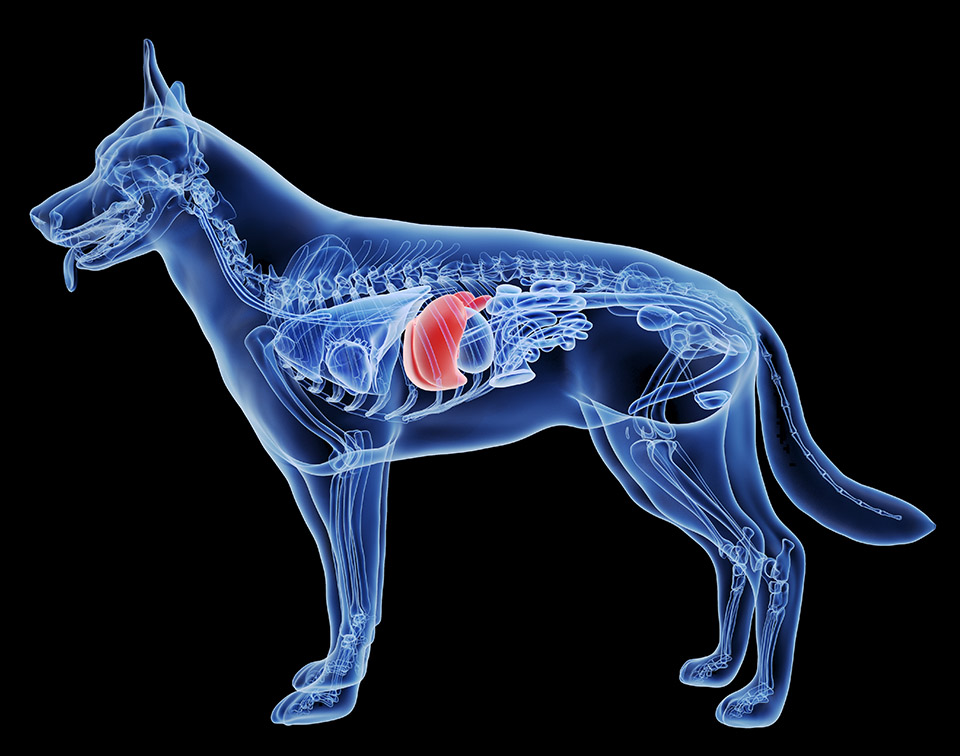This article was published in the January 2024 issue of Pet Food Processing. Read this and other articles from this issue on our January digital edition.
In the ever-evolving landscape of pet nutrition, a new debate is taking place around copper levels in pet diets and their potential link to hepatopathy, a type of liver disease, in dogs. This discussion taking place within the veterinary community today echoes earlier, highly publicized concerns about grain-free foods and their potential link to a heart condition called dilated cardiomyopathy (DCM). . Given the importance of such claims and the pet industry’s commitment to animal health and welfare, it is important to be aware of these concerns. At the same time, we must examine all such developments through the lens of controlled, prospective research that can observe and identify trends over time.
“The current debate over copper in pet food should serve as a rallying cry for the industry to promote sound scientific prospective research,” wrote Stephanie Clark, Sydney McCauley and Bradley Quest of BSM Partners.
Drawing parallels to the problems created by DCM, a researcher at The Veterinary College of Medicine at Cornell University is currently researching copper levels by requesting nutritional information from pet food manufacturers and promoting for the highest level of copper. Similar to DCM’s initial rumblings and source of controversy, the push to scrutinize copper reflects the methodology that fueled the controversy surrounding DCM, particularly the reliance on anecdotal observations and retrospective studies of case with significant limitations that cannot or should not be used to draw sweeping. conclusions. Upon further inspection, we also see other similarities, from claims about an increased incidence rate of copper-related disease, to the use of case studies that include animals with predisposed or already ill, and opinions taken as objective data. The importance of learning from past experiences and seeking more robust research methods cannot be overstated.
Incident claims are on the rise
The lack of concrete data supporting the alleged increase in DCM cases in 2019 reflects the uncertainty surrounding copper-related hepatopathies. In the case of DCM, no large-scale data have been published to support these beliefs. However, a commentary published by the Journal of the American Veterinary Association (JAVMA), which anchored the concerns that helped fuel the Food and Drug Administration’s (FDA) public comments on the issue, stated that “in In the past few years, an increasing number of DCM cases involving dogs appear to be related to diet.”
Subsequent review of information shared by the FDA under the Freedom of Information Act (FOIA) downplays any notion of an increase in DCM. Furthermore, a published, peer-reviewed analysis of data collected from veterinary cardiology clinics nationwide found that the incidence of DCM has remained relatively flat over the past 20 years.
Similarly, in 2022, The College of Veterinary Medicine at Cornell published that, “Copper-related hepatopathies have definitely increased.” The authors of a 2021 viewpoint article in JAVMA, also reposted in an AVMA News article, claimed, “Over the past 15 to 20 years, we have seen what we believe to be an increase of the incidence of copper-related hepatopathy in dogs.”

Dietary copper has made its way into dog food formulas by including ingredients such as beef liver, flaxseed, buckwheat, barley, sweet potatoes and others.
|Source: ©BIT24 – STOCK.ADOBE.COM
Despite this comment, the actual incidence rate of copper-associated hepatopathy in dogs is still unknown. In recognizing increased awareness and testing, it is crucial to differentiate between increased awareness and true increased incidence, as demonstrated in the DCM scenario.
Removing outliers
Concerns about increased disease around copper and grain-free diets are rooted in the notion that hepatopathy and DCM are suddenly observed in dogs that are not yet genetically predisposed to developing either disease. There will also be animals that are sick or already have diseases that can be precursors (co-morbidities) to the disease in question. So, when assessing the records of dogs diagnosed with hepatopathy or DCM, scientists should examine both of those groups. However, this was not the case with DCM. The link between copper restriction and hepatic disorders in some breeds should not be extrapolated to healthy dogs, but this is exactly what some researchers appear to be doing.
Veterinary researchers spent hundreds of hours reviewing a FOIA request for all FDA information, including medical records, obtained on all dogs referenced on June 27, 2019, FDA’s public release of the number of diet-related DCM cases they have received from the public.
The results of that analysis are as follows:
- The FOIA release only mentions 361 dogs reported to the FDA when it claims 560 dogs were reported to the FDA from January 1, 2014, to April 30, 2019.
- 143 of the 361 dogs identified were confirmed as predisposed breeds to DCM.
- 160 of the 361 dogs identified had some form of a medical record identified in the FOIA release, the rest did not.
- Of the 361 dogs reported, 62 had co-morbidities that could affect cardiac function, and 34 dogs had co-morbidities that could directly contribute to a diagnosis of DCM.
Confusion for pet owners
When pet owners are faced with situations where the science is unclear but scary headlines abound, they don’t know who to trust and don’t have enough information to make an informed decision. As we have seen in the case of DCM, they turn to veterinarians who are similarly not nutritionists and do not have enough time to stay abreast of the latest developments.
“When pet owners are faced with situations where the science is unclear but scary news headlines abound, they don’t know who to trust and don’t have enough information to make an informed decision. decision,” wrote Stephanie Clark, Sydney McCauley and Bradley Quest of BSM Partners.
As recently as 2016, there were concerns in the veterinary community that there were insufficient levels of copper in pet food, which then led to increased requirements for copper under the Association of American Feed Control Officials (AAFCO). Now, some vets claim that there is too much copper. How does a brand or a manufacturer know what is right?
The only way to do this is to help support prospective research, with control groups and large enough numbers of dogs. This is the only real way to validate and improve the guidance provided by the nutritional guidelines that affect the nutrition of 80 million dogs in the United States alone. Clinical trials with anecdotal treatments, while valuable for starting research conversations, can never provide definitive conclusions.
Focus on brands, not nutrition
A critical concern has arisen over brand-shaming, demonstrated by the FDA’s release of 16 brand names associated with reported cases of DCM. Executives must recognize the risk of regulators or veterinarians prematurely drawing causation without thorough investigation. This situation is evidenced by the disparity between reported cases of DCM and the lack of significant documentation regarding the diet history of dogs.
The potential establishment of arbitrary maximums for copper levels raises similar issues, implying the safety of brands based on unproven limits. We see the Cornell-based researcher’s attempts to solicit information from brands as a similar strategy used by some of the researchers behind the assertion that grain-free pet food causes DCM.
Opinionated articles add to the confusion
A recommendation is being sent through AAFCO to include “low copper” claims, adding another layer to the complex landscape. The “low copper” claim proposal reported to the AAFCO Expert Panel is based on the JAVMA opinion article. This exact scenario draws parallels to the 2018 commentary, published in JAVMA, which draws on the correlation and causation of BEG (boutique brands, exotic protein, and grain-free) canine diets by DCM.

According to experts at BSM Partners, more research is needed to examine a potential link between copper levels and liver disease in dogs before sounding the alarm among consumers.
|Source: ©SCIEPRO – STOCK.ADOBE.COM
This opinion-based article has been misinterpreted as objective scientific data by pet owners and the FDA. There have been at least two retraction letters for this article with over 200 signatures from veterinarians, animal scientists and other pet industry personnel in support of removing the article causing so much confusion .
These opinion pieces can lead to massive issues in the market. For example, if there is an arbitrary upper limit, almost every product on the market will be suspect and will need to be tested and potentially reformulated. Therefore, it is necessary to navigate the fine line between addressing consumer concerns and avoiding premature, unsupported scientific claims that could cause market instability.
The current debate over copper in pet food should serve as a rallying cry for the industry to promote sound scientific prospective research. Nutritional guidelines that are important to the health of pets should only evolve based on thorough research and unbiased expert reviews. As leaders in the industry, fostering an environment where decisions are informed by comprehensive, rigorous research and ensuring that the welfare of pets remains a priority.
Stephanie Clark, Ph.D., CVT, PAS, CFS, Dpl. ACAS, VTS (Nutrition) is a board-certified associate animal nutritionist and assistant director of Special Services at BSM Partners. Sydney McCauley, Ph.D., PAS, Dpl. ACAS is a board-certified associate animal nutritionist and manager of Product Innovation at BSM Partners. Bradley Quest, DVM, is the principal of Veterinary Services at BSM Partners.
Find more articles related to pet nutrition research.


